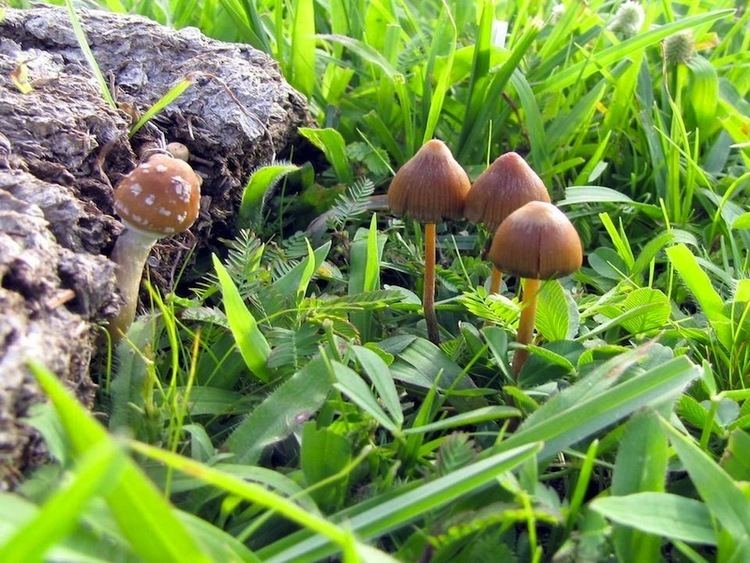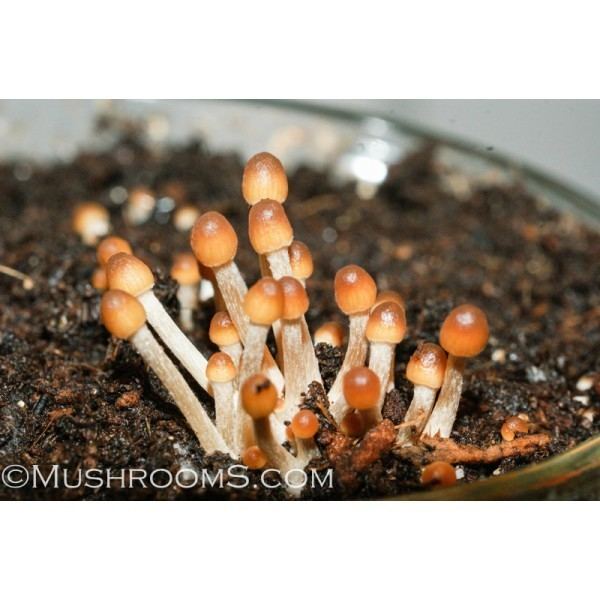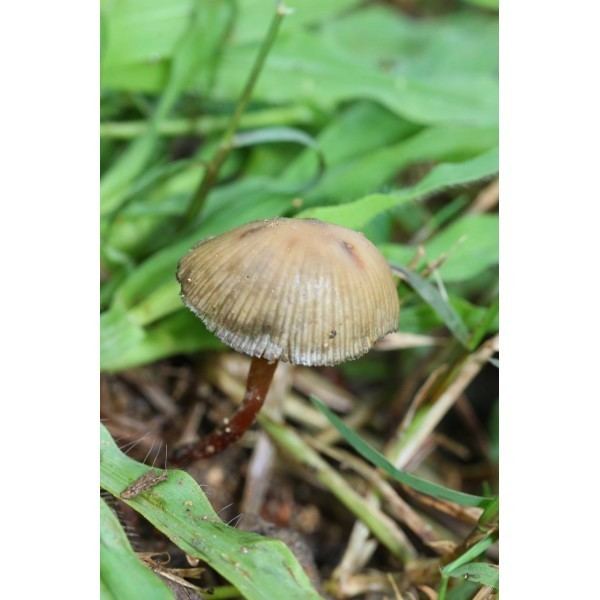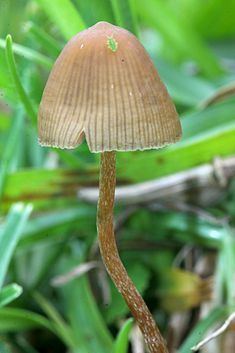Order Agaricales Higher classification Psilocybe | Division Basidiomycota Family Strophariaceae Scientific name Psilocybe mexicana Rank Species | |
 | ||
Similar Psilocybe, Psilocybe tampanensis, Psilocybe atlantis, Magic mushrooms, Psilocybe cyanescens | ||
Psilocybe mexicana is a psychedelic mushroom. Its first known usage was by the natives of Central America and North America over 2,000 years ago. Known to the Aztecs as teonanácatl from Nahuatl: teotl "god" + nanácatl "mushroom." This species was categorized by French botanist Roger Heim.
Contents

It was from this species that Dr. Albert Hofmann, working with specimens grown in his Sandoz laboratory, first isolated and named the active entheogenic compounds psilocybin and psilocin. Uncertain of whether or not the artificially cultivated mushrooms would retain their natural psychoactive properties, Dr. Hofmann consumed 32 specimens. The following is his account of the experience, published in his classic text, The Botany and Chemistry of Hallucinogens:

As I was perfectly aware that my knowledge of the Mexican origin of the mushrooms would lead me to imagine only Mexican scenery, I tried deliberately to look on my environment as I knew it normally. But all voluntary efforts to look at things in their customary forms and colours proved ineffective. Whether my eyes were closed or open, I saw only Mexican motifs and colours. When the doctor supervising the experiment bent over me to check my blood pressure, he was transformed into an Aztec priest, and I would not have been astonished if he had drawn an obsidian knife. In spite of the seriousness of the situation, it amused me to see how the Germanic face of my colleague had acquired a purely Indian expression. At the peak of the intoxication, about 1½ hours after ingestion of the mushrooms, the rush of interior pictures, mostly changing in shape and colour, reached such an alarming degree that I feared I would be torn into this whirlpool of form and colour and would dissolve. After about six hours, the dream came to an end. Subjectively, I had no idea how long this condition had lasted. I felt my return to everyday reality to be a happy return from a strange, fantastic but quite really experienced world into an old and familiar home.

This mushroom is in the section Mexicanae. Other mushrooms in this section include Psilocybe atlantis and Psilocybe samuiensis. Ramirez-Cruz et al. (2013) considered Psilocybe acutipilea from Brazil to be a possible synonym of Psilocybe mexicana, in which case it would be the senior synonym, but the type specimen was too moldy for them to be certain.

La renga psilocybe mexicana
Description

Psilocybe mexicana may form sclerotia, a dormant form of the organism, which affords it some protection from wildfires and other natural disasters.
Distribution and habitat
Psilocybe mexicana Solitary or in small groups among moss along roadsides and trails, humid meadows or cornfields, in particular in the grassy areas bordering deciduous forests. Common at elevations between 300–550 metres (980–1,800 ft), rare in lower elevations, known only from Mexico, Costa Rica and Guatemala. Fruiting takes place from May to October.
Consumption and cultivation
Like several other psilocybin mushrooms in the genus, Psilocybe mexicana has been consumed by indigenous North American and Central American peoples for its entheogenic effects.
In the Western world, sclerotia of Psilocybe mexicana are sometimes cultivated for entheogenic use. The sclerotia have a lower content of active substances than the actual mushrooms themselves.
